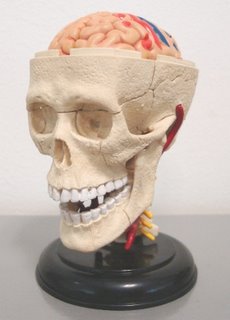
What are some of the strengths and weaknesses of the life science endeavour in Singapore?
Strengths include:
1. Strong governmental supportUS$8 billion over the next five years in R&D, mainly in the biomedical sector. This immense investment helps build
infrastructure and provide research funding for many projects.
2. Investment focus and strategy
State agencies have worked hard to bring in large pharmaceutical giants like
Pfizer,
Schering-Plough and
Novartis, some (such as Novartis) which have a R&D department here in addition to their manufacturing plants . So far most of the economic growth in this sector has been due to these drug companies. A few small biotech companies have also been enticed to come to Singapore.
3. Educated workforce In addition to funding research, the government has also spared no effort to provide training opportunities for the people. The
good science and maths performance of our school children is already fairly well known, and this strong educational foundation is enhanced with updated life science knowledge from secondary school all the way to the PhD level.
Specialized life science degrees are offered at local universities and students are strongly encouraged to enter graduate school in this field. In fact, A*Star intends to
train about 1000 PhDs by 2010.
4. Research focus and strategyTo make the best of our limited resources, identifying niche research areas where we show high competence is crucial. These include
genome science,
stem cell biology (especially embryonic stem cell research which is severely crippled in the USA), research on infectious diseases common to the region, and clinical translational research. Local research centres have also formed strategic alliances with renowned institutes overseas, such as the Karolinska Institutet.
5. Other strengths
These include the
freedom of research projects (within the areas of focus), respect for
intellectual property and a well-defined
bioethics framework. In addition, scientists who come from countries with bitterly cold winters, will be attracted to Singapore, which has year-round summer temperatures.
The above strong points have already given the life sciences in Singapore promising start. However, in order to reach sustainability, the life science effort in Singapore has to face a number of important
challenges:
1. Powerful global competitorsOf course, the United States of America continues to be the R&D powerhouse of the world, producing more than
30% of the whole world's scientific output by publications. However, scientific research in Europe and Asia is on the rise. Recently China has overtaken Japan to become the
2nd biggest R&D spender in the world.
As a small city state we can never match their resources, so the emergence of these new powerful players in the life sciences presents a serious challenge.
2. Talent retention/oversupplyHuman capital is of the utmost importance in science, and managing this valuable resource will be a constant headache. Good foreign scientists are attracted to Singapore with generous pay and research grants, but keeping them here will be difficult because our global competitors may be willing to offer even more. Other tangible and intangible benefits gradually become more important.
Also, the flipside of training thousands of PhDs is that they become the most mobile workforce segment, since postdocs are welcome everywhere. They can leave to another country or leave science - either way the talent pool shrinks.
And it is not only the shortage of trained personnel that can become a serious issue - oversupply can be just as problematic albeit in a different way. Some life science graduates are already
facing difficulties finding jobs in the life science field. As the entire industry matures, it will no longer grow as rapidly and employment opportunities will get harder to come by, whether you have a PhD or not.
3. High biotech startup attritionFor the life science endeavour to become self-sustaining, some of our scientists will have to quit academia for industry or to start a company. Biotechnology is a new, 20-year-old industry that has seen strong growth in the US, mainly from established biotech firms like Genentech.
Unfortunately, starting up a new biotech company is a very risky venture with a high attrition rate. There are many reasons for this - management issues such as the struggle for control of the company between the businessmen and the scientists, and technical issues regarding the effectiveness of new, untested technologies. I know of a senior academic who had started four biotech firms, which all failed.
Despite government encouragment, venture capitalists and private investors are generally wary of biotech startups. Only a handful (out of a total of about 30) local biotech firms have had significant success so far.
4. Lack of creative milieu
Creativity is an important aspect of science in general. In Singapore, creativity is encouraged on paper, but the actual space permitted for creative expression is limited. The growth of the arts and entertainment industry has been painfully slow - this is relevant to science because the
roots of science and the liberal arts are closely related.
Thus while the more "industrial" aspects of the life science endeavour will surge ahead, truly original, bizarre ideas that have the potential to transform the world are unlikely to arise in Singapore. The deeply-rooted pragmatic, industrious spirit here that sparked the spectacular start of the life sciences is a double-edge sword - it is so efficient that it may prune away revolutionary ideas and regard them as useless. Local scientists are obsessed with hard work and are not receptive to fresh approaches.
For the life science endeavour to become entrenched as part of our society, I believe a spirit of playfulness such as the
Chindogu spirit is a necessity. This runs counter to the official purpose of the life science industry in Singapore, which is
not to produce Nobel prize winners, but simply to create jobs and generate revenue.
5. Other weaknesses
These include lack of entrepreneurial and scientific tradition in Singapore. Our general population is still bewildered by this quickly emerging life science endeavour. Scientists are often confused with doctors and biology is confused with medicine. A sizeable proportion of the people still believe in various superstitions, visit traditional healers and use folk remedies. This is however not a serious drawback since the younger generation of Singaporeans are less susceptible to such beliefs.
As for the weather, visitors from colder climates are often taken aback by the heat and humidity here. They are also surprised at how violent our lightning storms can be. Depending on your personal preference, our weather can be either a strength or a weakness.
ConclusionWe have come a long way since that critical discussion between Mr. Lee and Dr. Brenner more than 20 years ago. The traditional mobile clinic is gone; in the horizon new symbols of our nascent scientific prowess arise.
Where will we go from here? Unlike a work of fiction, this real life story has no predefined ending, and nobody can predict what the turns and twists ahead will be.
But when they happen, you
know you can catch it right here.
On freshbrainz.com
 An article that is long overdue. Since no one has written on that terrible scourge of humankind yet, I've decided to do it myself.
An article that is long overdue. Since no one has written on that terrible scourge of humankind yet, I've decided to do it myself. An article that is long overdue. Since no one has written on that terrible scourge of humankind yet, I've decided to do it myself.
An article that is long overdue. Since no one has written on that terrible scourge of humankind yet, I've decided to do it myself. Ah... the year end weather is nice and cool, all thanks to the thunderstorms from the northeast monsoon. Instead of a blistering 32 degrees in the shade, we now have a more humane 24 degs.
Ah... the year end weather is nice and cool, all thanks to the thunderstorms from the northeast monsoon. Instead of a blistering 32 degrees in the shade, we now have a more humane 24 degs.
 Tomorrow, on the 10th of December, American scientists Dr. Andrew Z. Fire and Dr. Craig C. Mello will be receiving the 2006 Nobel Prize for Physiology and Medicine from the King of Sweden at the Stockholm Concert Hall.
Tomorrow, on the 10th of December, American scientists Dr. Andrew Z. Fire and Dr. Craig C. Mello will be receiving the 2006 Nobel Prize for Physiology and Medicine from the King of Sweden at the Stockholm Concert Hall. What are some of the strengths and weaknesses of the life science endeavour in Singapore?
What are some of the strengths and weaknesses of the life science endeavour in Singapore?
